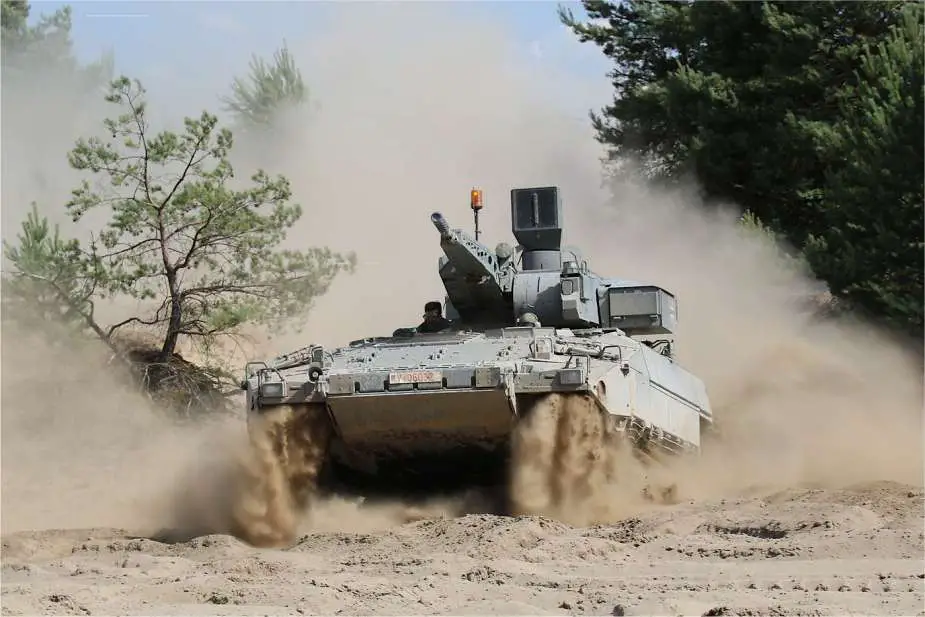Breaking news
German army tested upgraded Puma Infantry Fighting Vehicle.
On September 5, 2023, the German army (Bundeswehr) successfully completed a three-week testing phase of the upgraded Puma armored infantry vehicle, aimed at enhancing its combat capabilities. The trials were conducted at the Oberlausitz military training ground under challenging conditions.
Follow Army Recognition on Google News at this link

Upgraded Puma infantry fighting vehicle during a test at Trier (Picture source: German MoD )
The Puma armored infantry vehicle was designed and primarily used by Germany. It is equipped with a 30mm gun, a 7.62mm coaxial machine gun, and eight smoke-grenade launchers. This combination allows for a wide range of combat scenarios, from engaging enemy infantry to providing cover for troop movements.
The German IFV weighs 31,450 kg at Protection Level A and 40,700 kg at Protection Level C. The Puma boasts a top speed of 70 km/h and, coupled with a range of 650 km, offers both speed and endurance. The vehicle is designed to accommodate a crew of three, along with six additional soldiers. The Puma measures 7.33 meters in length, 3.43 meters in width, and has a height of 3.050 meters. It is also equipped with a range of accessories to enhance its operational capabilities, including air conditioning, an NBC (Nuclear, Biological, Chemical) protection system, and night vision capabilities. The vehicle also features advanced firing control systems and main armament stabilization, ensuring accuracy even under challenging conditions.
The Bundeswehr's Technical Center for Land-Based Vehicle Systems, Engineering, and Troop Technology (WTD 41) in Trier led the tests. The Puma was put through its paces to evaluate its enhanced features and overall durability.
The Oberlausitz training ground presented a harsh environment for the trials. Persistent dry conditions made the sandy test tracks extremely dusty, posing a risk of microscopic dust particles infiltrating the vehicle's nooks and crannies. Questions about the vehicle's air filtration system and its mobility in deep sand were among the key concerns. The Puma covered nearly 1,300 kilometers during the tests, with both the crew and the vehicle enduring extreme heat and dust conditions.
The test Puma was also equipped with a tactical, laser-based weapon training system, allowing for full-scale combat simulations. This included coordination with other weapon systems such as tanks, artillery, and infantry. Electrical weapon and effect simulators were also installed on the Puma for this purpose. The new system was also subjected to dusty conditions and rugged driving, and it performed admirably.
The Puma was loaded with an additional two tons of equipment for the tests, compared to its standard configuration. This is in line with the military's experience that vehicles tend to get heavier over time due to upgrades like enhanced armor and more powerful weapons. The tests closely monitored whether the vehicle's drive components, such as the engine and transmission, as well as the suspension, could withstand the increased weight and resulting stress.
While intensive tests like these can result in some equipment damage, the aim is to push the technology to its limits for the safety of the soldiers. Any issues identified during the tests will now be closely examined and resolved.


























